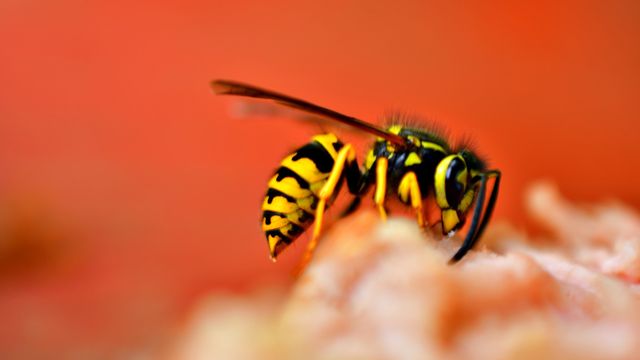Thank you. Listen to this article using the player above. ✖
Want to listen to this article for FREE?
Complete the form below to unlock access to ALL audio articles.
A new study has found that jewel wasps can extend their lifespan by undergoing a developmental pause known as diapause. Researchers from the University of Leicester report that this process significantly slows biological ageing in the species Nasonia vitripennis, an emerging model for aging studies.
Diapause
A natural state of suspended development in insects, allowing them to survive unfavorable conditions.
The findings, published in PNAS, show that this delay in larval development extends the insects’ adult lifespan by over one-third and slows molecular aging by nearly 30%.
Tracking molecular ageing through DNA changes
Ageing can be measured by changes to DNA methylation – chemical modifications that regulate gene expression without altering the DNA sequence. These changes are used to calculate the “epigenetic clock,” a molecular marker of biological age.
Epigenetic clock
A biological marker that estimates an organism’s age by measuring specific patterns of DNA methylation.
DNA methylation
A chemical modification where a methyl group is added to DNA, often affecting gene activity. Methylation changes over time and is used to track aging and disease progression.
In the study, the team induced diapause by exposing pregnant female wasps to cold and darkness. This prompted their offspring to enter a dormant state during development. Once resumed, these wasps not only lived longer but also exhibited a slower rate of change in their DNA methylation patterns, indicating a delay in biological aging.
A simple insect with a complex methylation system
Unlike many invertebrates, N. vitripennis possesses a functional DNA methylation system similar to that of humans. Its short lifespan and genetic tractability make it suitable for studies on aging.
Following diapause, researchers found alterations in biological pathways associated with insulin signaling and nutrient sensing – mechanisms that are also implicated in human longevity. These shared pathways suggest that insights from this model may inform broader biological questions, though the study does not imply direct applicability to humans.
Insulin signaling pathway
A cellular communication system that regulates metabolism and energy use.
Lifelong effects from early-life interventions
While other animals can enter dormant states to survive harsh conditions, this study is among the first to show that such a pause can have long-lasting effects on aging after development resumes. The results suggest that early-life environmental factors may shape aging trajectories, at least in invertebrate models.
Reference: Foley EEB, Thomas CL, Kyriacou CP, Mallon EB. Larval diapause slows adult epigenetic aging in an insect model, Nasonia vitripennis. Proc Natl Acad Sci USA. 2025;122(31):e2513020122. doi: 10.1073/pnas.2513020122
This article has been republished from the following materials. Note: material may have been edited for length and content. For further information, please contact the cited source. Our press release publishing policy can be accessed here.
This content includes text that has been generated with the assistance of AI. Technology Networks’ AI policy can be found here.
